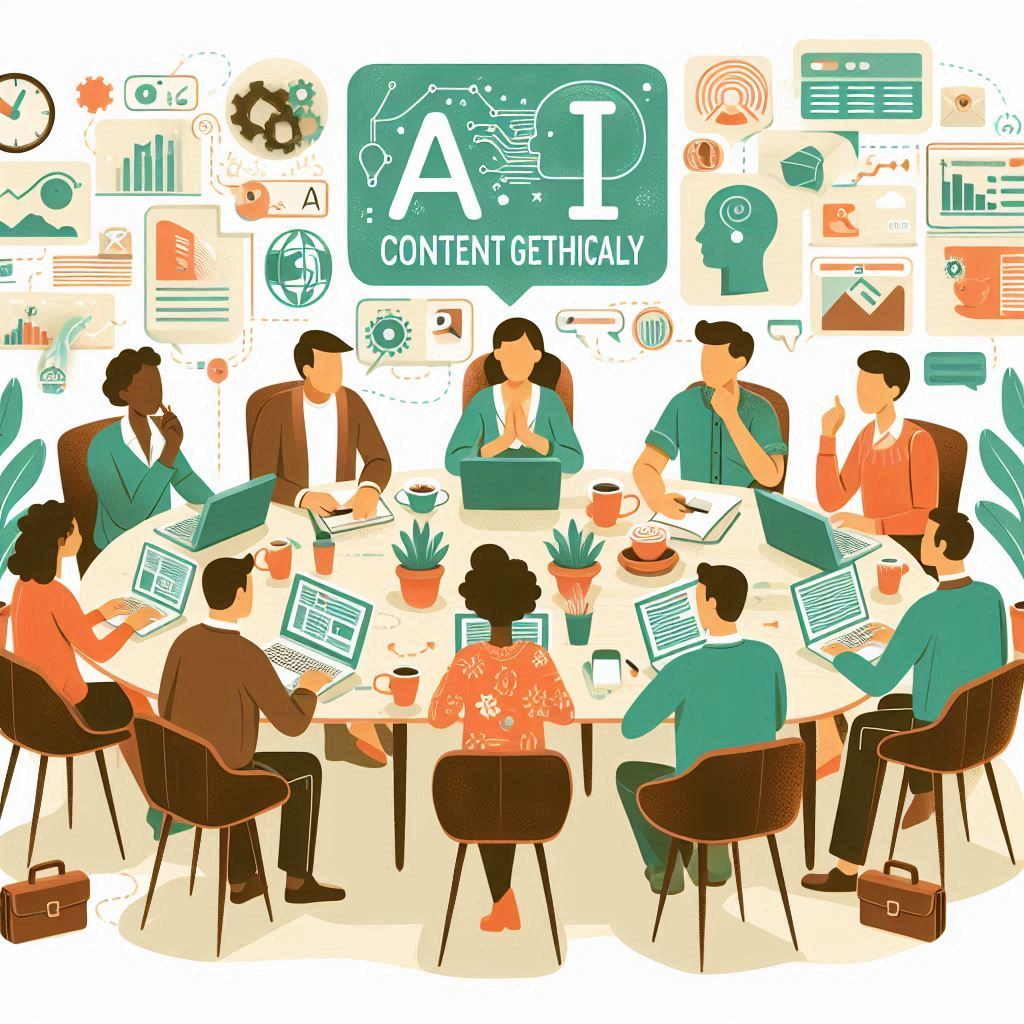
03
How to Use AI Content Generators Ethically: QuickTools.site’s 2025 Guide
AI content generators are powerful tools, but ethical concerns such as plagiarism, misinformation, and transparency must be addressed. This guide from QuickTools.site outlines best practices for using AI responsibly, including ensuring originality, disclosing AI usage, fact-checking information, and respecting copyright laws. By balancing AI efficiency with human oversight, users can create credible and ethical content in 2025 and beyond.
Introduction
AI content generators have transformed the way we create written materials, making content production faster and more accessible. However, as their capabilities grow, so do ethical concerns surrounding their use. From plagiarism to misinformation, the responsible use of AI-generated content is more critical than ever.
This guide from QuickTools.site explores the ethical use of AI content generators in 2025, helping writers, businesses, and marketers harness AI responsibly while maintaining integrity, transparency, and quality.
Understanding AI Content Generation
AI-powered content generators, such as ChatGPT, Jasper AI, and Copy.ai, use machine learning to produce text based on patterns in vast datasets. These tools can create blog posts, product descriptions, emails, and even entire books within minutes. While they boost efficiency, their use must align with ethical writing practices to maintain credibility.
Ethical Considerations When Using AI for Content
1. Avoiding Plagiarism and Ensuring Originality
One of the primary concerns with AI-generated content is plagiarism. AI tools can sometimes replicate text too closely from existing sources. To prevent this:
- Use plagiarism checkers (Grammarly, Copyscape) before publishing AI-generated content.
- Always rephrase and add original insights to make AI-assisted text unique.
- Treat AI as a writing assistant rather than an automatic content publisher.
2. Maintaining Transparency and Disclosure
Transparency builds trust, especially when using AI-generated content in journalism, academic writing, or professional articles. Ethical AI usage includes:
- Disclosing when AI is used to generate content, especially in sensitive fields.
- Informing readers when AI assists in content creation (e.g., "This article was AI-assisted").
- Combining AI-generated content with human editing for accuracy and authenticity.
3. Avoiding the Spread of Misinformation
AI-generated content may occasionally produce inaccurate or misleading information. To ensure credibility:
- Fact-check all AI-generated content before publishing.
- Cross-reference AI output with authoritative sources.
- Avoid AI-generated opinions on complex topics like medical, legal, or financial advice without expert review.
4. Respecting Copyright and Intellectual Property
AI does not "create" in the human sense; it analyzes existing data to generate text. To stay legally compliant:
- Avoid copying proprietary content verbatim.
- Ensure AI-generated images or text do not infringe on copyrights.
- Use AI-generated content as inspiration rather than a final product.
5. Using AI to Enhance, Not Replace, Human Creativity
AI should be a tool to support creativity, not replace human expression. Ethical AI use involves:
- Using AI for brainstorming, structuring, and drafting content while maintaining human oversight.
- Adding a unique voice, opinions, and expertise to AI-generated drafts.
- Ensuring that AI-generated content aligns with brand values and ethical writing standards.
Best Practices for Ethical AI Content Creation
- Review and Edit Everything: Never publish raw AI-generated content without human revision.
- Use AI as a Research Assistant: AI can help gather ideas but should not be relied on as the sole source.
- Stay Informed on AI Policies: Keep up with AI ethics guidelines and platform-specific regulations.
- Respect Audience Trust: Never deceive readers by presenting AI-generated content as entirely human-created when it's not.
The Future of Ethical AI Content Creation
As AI continues to evolve, the ethical implications of content generation will become even more significant. Regulations may tighten, and businesses that prioritize ethical AI use will build stronger credibility. The future lies in a balanced approach—leveraging AI for efficiency while ensuring responsible and honest communication.
Conclusion
AI content generators are powerful tools, but their ethical use is essential to maintain integrity in content creation. By avoiding plagiarism, being transparent, fact-checking information, and respecting intellectual property, users can harness AI responsibly. Ethical AI writing isn’t just about following rules—it’s about ensuring quality, credibility, and trust in the digital landscape.
FAQs
1. Is AI-generated content considered plagiarism?
Not always, but AI can sometimes produce text similar to existing sources. Always check for originality before publishing.
2. Should I disclose that AI helped generate my content?
Yes, especially in professional and journalistic contexts, transparency is key to maintaining credibility.
3. How can I ensure AI-generated content is accurate?
Fact-check AI content against credible sources and avoid using AI for complex topics without expert validation.
4. Can AI replace human writers?
No, AI should be used as an assistant rather than a replacement. Human creativity, insight, and critical thinking remain irreplaceable.
5. Are there legal risks in using AI content generators?
Yes, potential risks include copyright infringement and spreading misinformation. Always ensure AI-generated content complies with ethical and legal standards.
Contact
Missing something?
Feel free to request missing tools or give some feedback using our contact form.
Contact Us